17 Things That Make Boarding Easier + 5 Bad Habits To Break
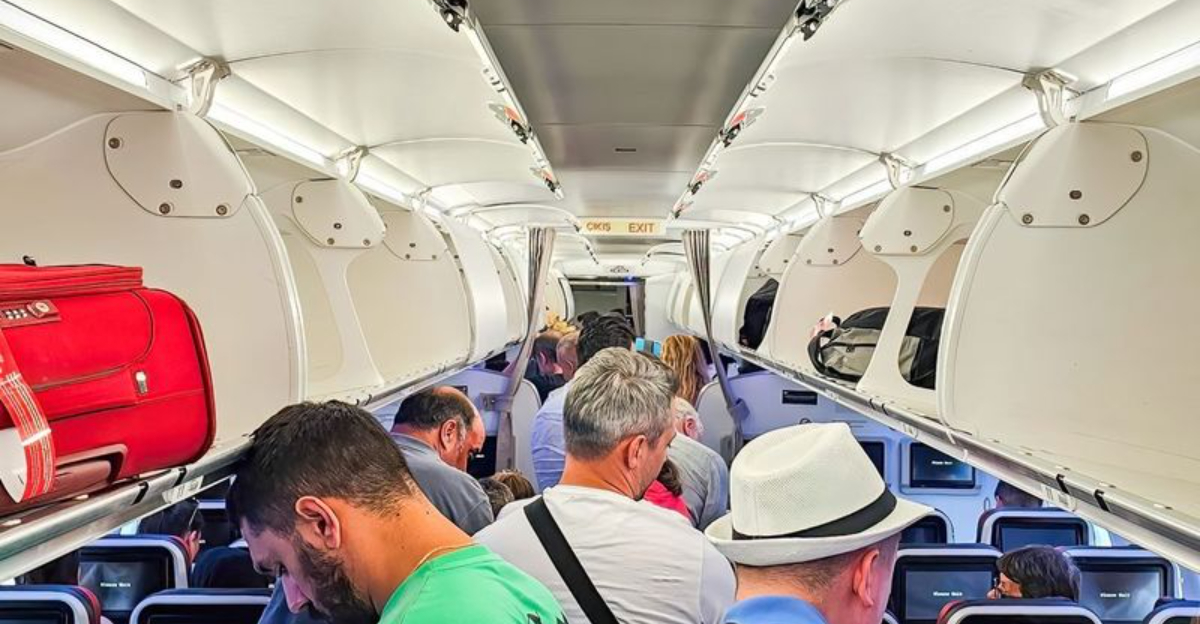
Getting on a plane shouldn’t feel like a competitive sport—but sometimes it does. Between the crowded gates, overhead bin battles, and last-minute seat swaps, boarding can get chaotic fast. The good news? A little prep and know-how can make a huge difference.
Over the years (and countless flights later), I’ve picked up 17 simple but game-changing boarding tips that help everything run smoother—from choosing the right seat to when you should (and shouldn’t) rush to line up.
And because we’ve all seen travelers unintentionally slow everything down, I’ll also flag 5 common mistakes that are best avoided. Want to board like a pro and keep the stress levels low? These tips might just change the way you fly—for good.
1. Use Mobile Boarding Pass
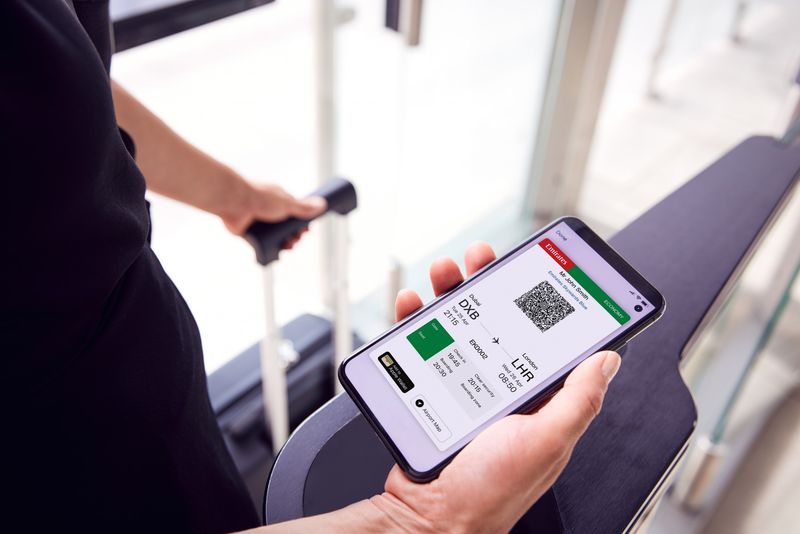
Mobile boarding passes eliminate paper hassles completely. I always download mine to my phone’s wallet app as soon as check-in opens, making it accessible even without internet connection.
No more frantic searching through bags or worrying about crumpled paper passes! Your phone is typically already in your hand, making the scanning process quick and efficient.
Pro tip: Take a screenshot of your boarding pass as backup in case the airline app crashes or your internet connection fails. This simple habit has saved me countless times in airports with spotty Wi-Fi.
2. Pack Smart Carry-On

Organizing your carry-on strategically makes boarding so much smoother! I arrange items based on when I’ll need them – electronics and liquids at the top for easy security access, while in-flight essentials go in external pockets.
Color-coded packing cubes help me find things instantly without digging through my entire bag. This system prevents me from becoming that person holding up the line while searching for headphones.
Consider investing in a carry-on with dedicated laptop compartments and quick-access pockets. These features make security screening faster and help you grab what you need without unpacking everything mid-flight.
3. Dress for Security
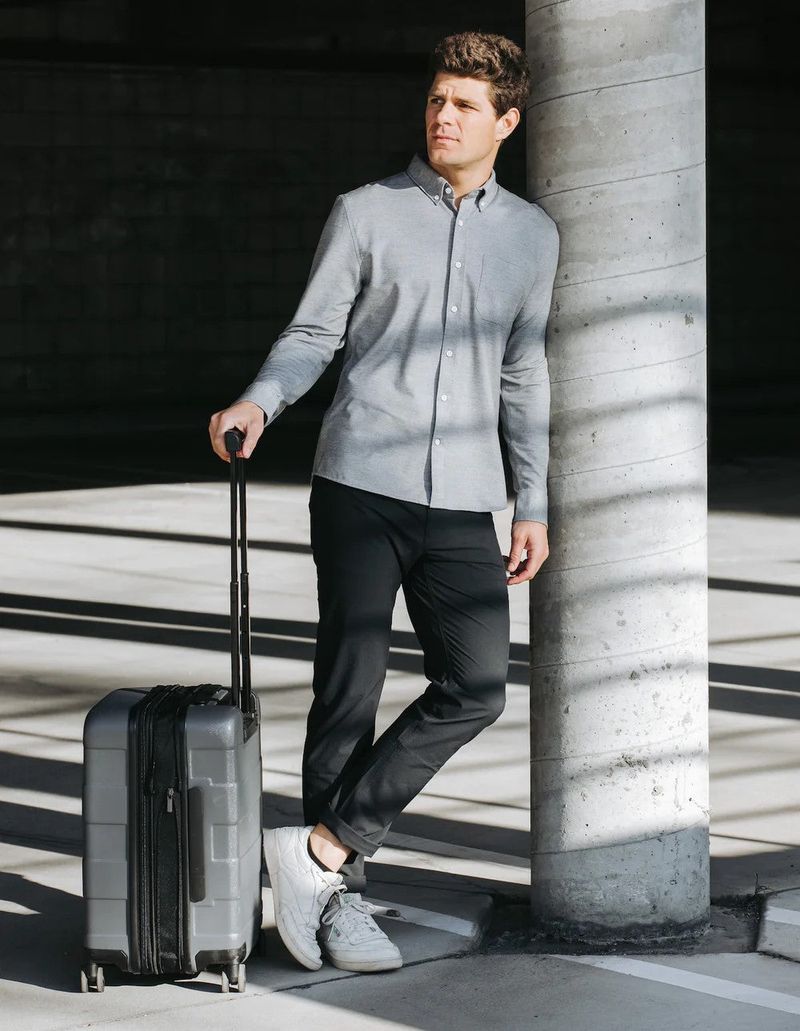
Wearing the right clothes through security checkpoints can save precious minutes! I avoid belts, excessive jewelry, and complicated shoes that require removal and cause delays.
Opt for slip-on shoes, minimal metal accessories, and outfits without multiple layers. Wearing socks is essential when your shoes come off on that not-so-clean airport floor.
My go-to travel outfit includes stretchy jeans with no metal buttons, a simple cotton top, and a zip-up hoodie with pockets for quick storage of small items like my phone and boarding pass. This combo keeps me comfortable during the flight while speeding through security without setting off alarms.
4. Keep Passport Handy
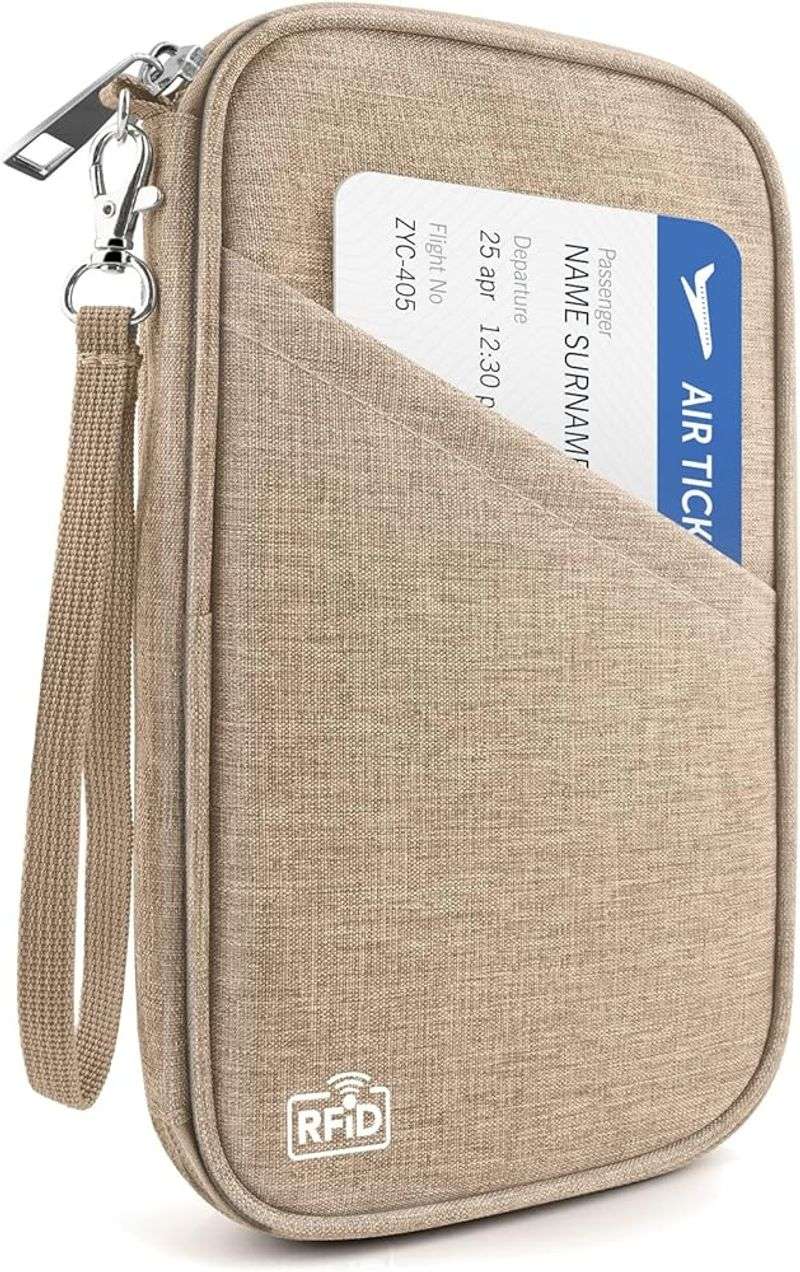
Your passport is requested multiple times during international travel, so accessibility is key! I use a dedicated neck pouch or front pocket in my carry-on exclusively for this crucial document.
Creating a consistent home for your passport prevents the heart-stopping panic of thinking you’ve lost it. When boarding starts, I keep it in my hand along with my boarding pass to avoid slowing down the line.
If traveling with family, designate one person to hold all passports in a special holder. This prevents confusion and ensures you won’t be frantically searching through different bags when an agent is waiting for your documents.
5. Know Your Gate Early
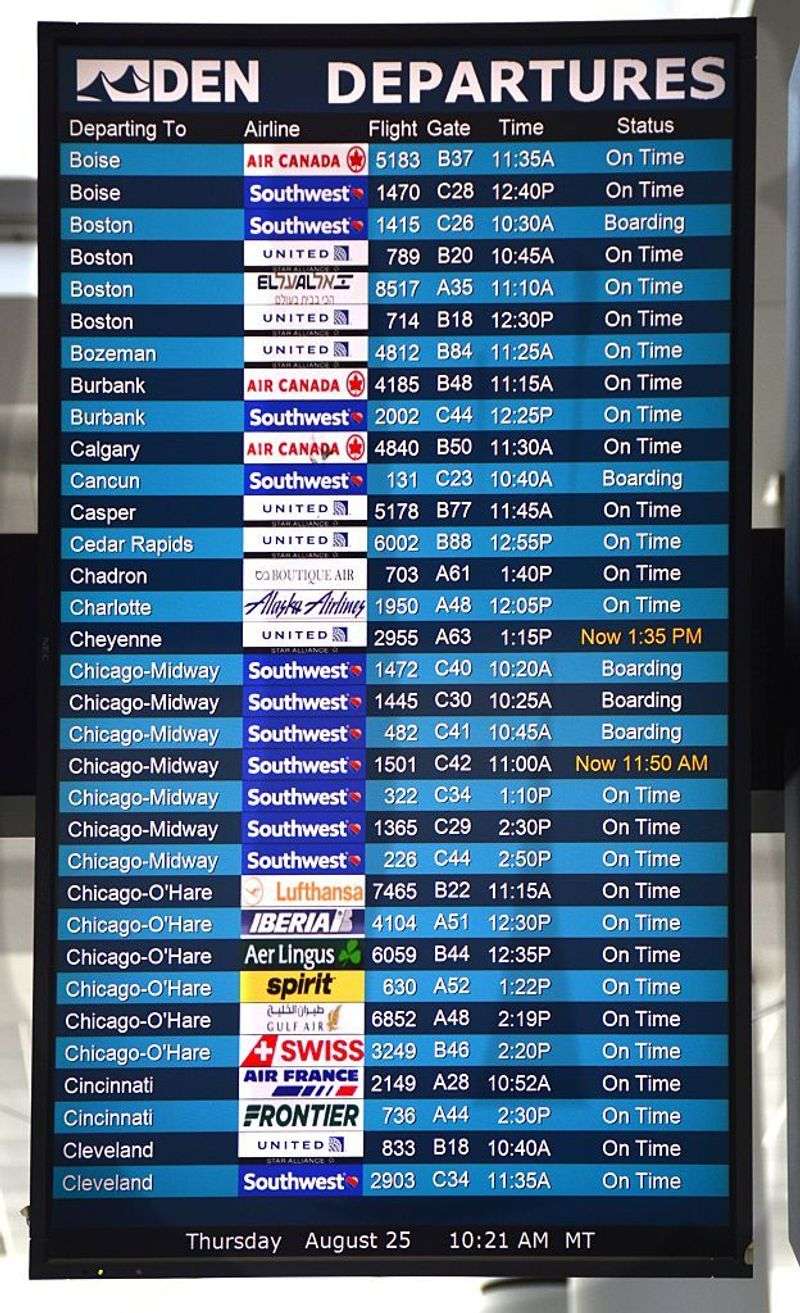
Gate changes happen more often than you might think! I make it a habit to check the departure boards immediately after clearing security, then again 30 minutes before boarding time.
Many airports now offer maps on their websites or apps showing walking times between gates. This feature helps me plan exactly when to leave the lounge or restaurant if I’m grabbing a pre-flight snack.
For connecting flights with tight layovers, I research the airport layout beforehand. Knowing whether you’ll need to take a train between terminals or walk long distances can save you from missing your connection and the stress of running through crowded hallways.
6. Label Your Bags Clearly
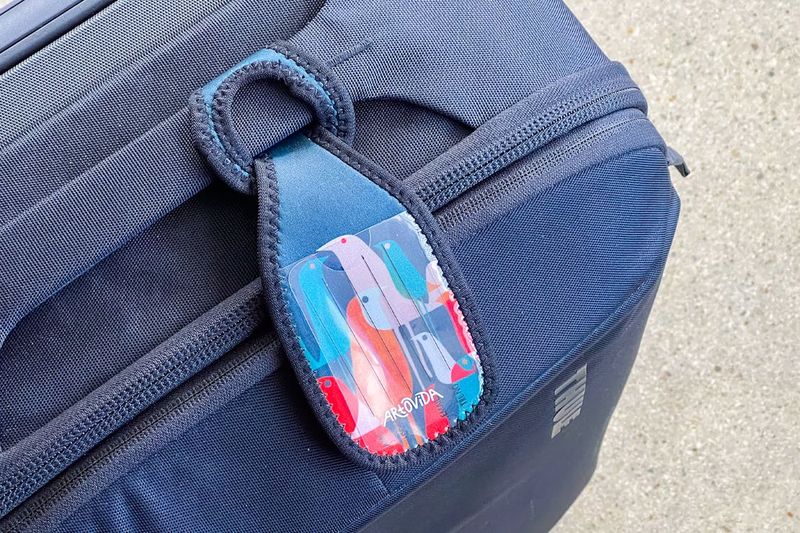
Bright, distinctive luggage tags make spotting your bags instantly easier in the sea of similar-looking suitcases. I use tags with my contact information on the inside but no personal details visible from the outside for privacy.
Adding unique identifiers like colorful ribbons or stickers to your luggage also helps gate agents identify your bags quickly if they need to be gate-checked. This prevents confusion when multiple black suitcases are being loaded.
Take a quick photo of your luggage before your trip. If your bag gets lost, you’ll have an exact image to show airline staff rather than struggling to describe a “medium-sized black suitcase” – which describes about half the bags on any flight!
7. Wear Slip-On Shoes
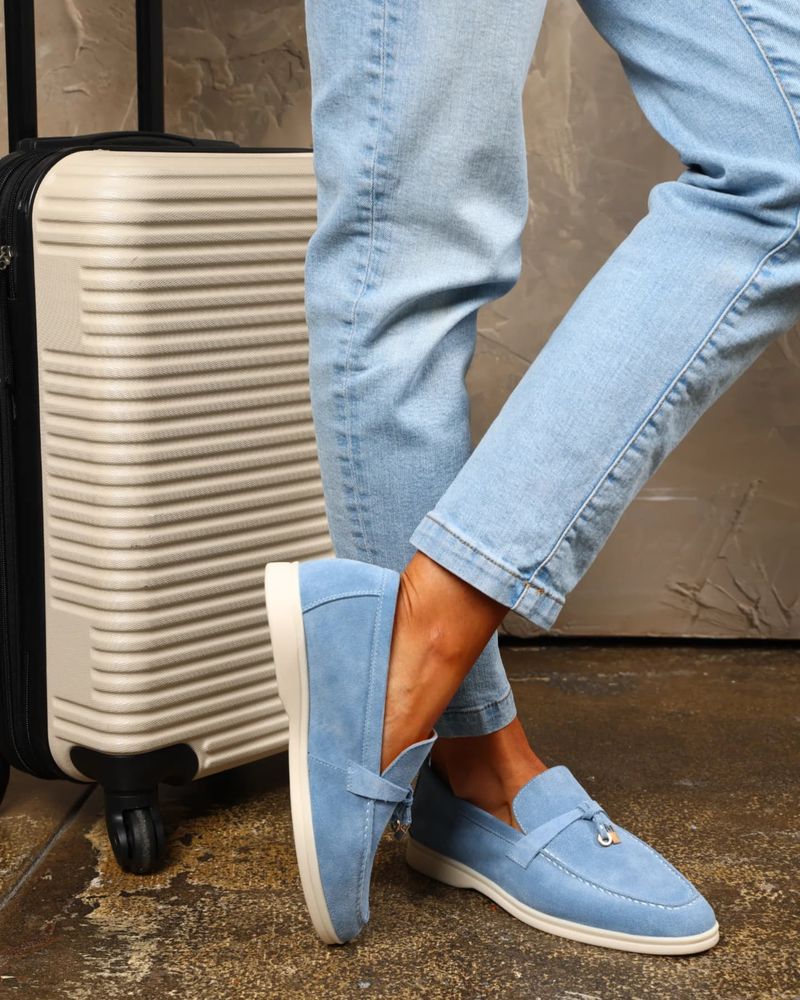
Fumbling with laces or complicated boots creates unnecessary stress during security screening. I switched to slip-on sneakers or loafers years ago and have never looked back!
These convenient shoes make the security process smoother and quicker. You’ll appreciate them even more when racing to make a tight connection or when boarding begins before you’ve finished your pre-flight coffee.
Memory foam slip-ons provide comfort during long flights while still looking presentable enough for business travel. As an added bonus, they easily slide off during the flight, allowing your feet to breathe without the awkward contortions required to untie shoelaces in cramped airplane seating.
8. Charge Devices in Advance
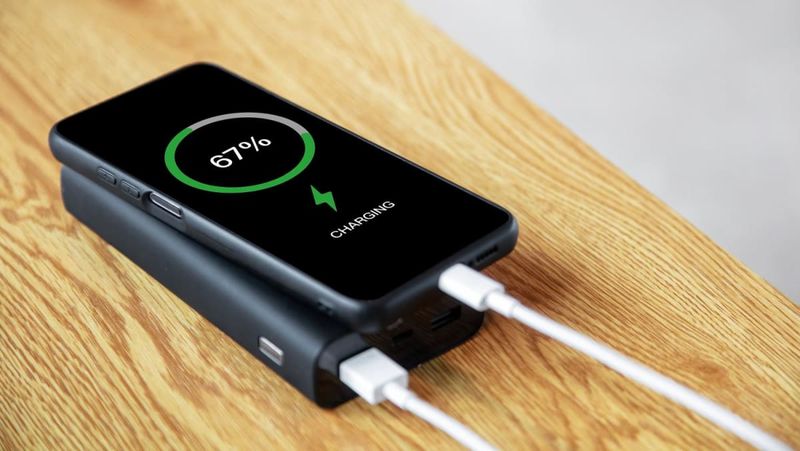
Dead phone batteries can cause major boarding problems when your boarding pass is digital! I always charge everything to 100% the night before travel and bring a portable charger as backup.
Many newer airports have charging stations, but they’re often crowded. Having your own power bank means never fighting for outlet space or sitting on the floor near the only available plug.
If you frequently travel internationally, invest in a universal adapter with multiple USB ports. This single device can charge your phone, tablet, and other electronics simultaneously, regardless of what type of outlets your destination country uses.
9. Listen for Final Calls
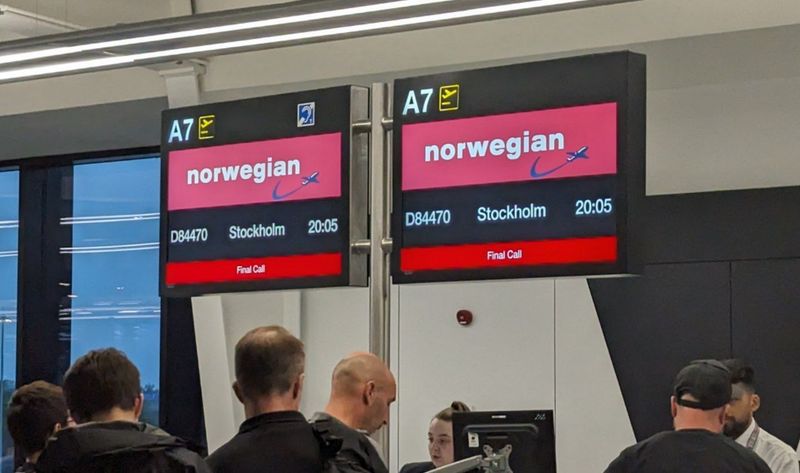
Missing boarding announcements happens easily when you’re engrossed in a book or wearing headphones. I make it a habit to remove one earbud once I’m within 30 minutes of boarding time.
Gate agents often make important announcements about boarding procedures or seat changes that aren’t displayed on screens. Staying alert to these verbal updates can save you from confusion or missing important information.
Some airlines have begun using their apps to send push notifications when boarding begins for your flight. Enabling these alerts provides an extra layer of security against missing your boarding group, especially in noisy terminals where announcements are difficult to hear.
10. Board When Called
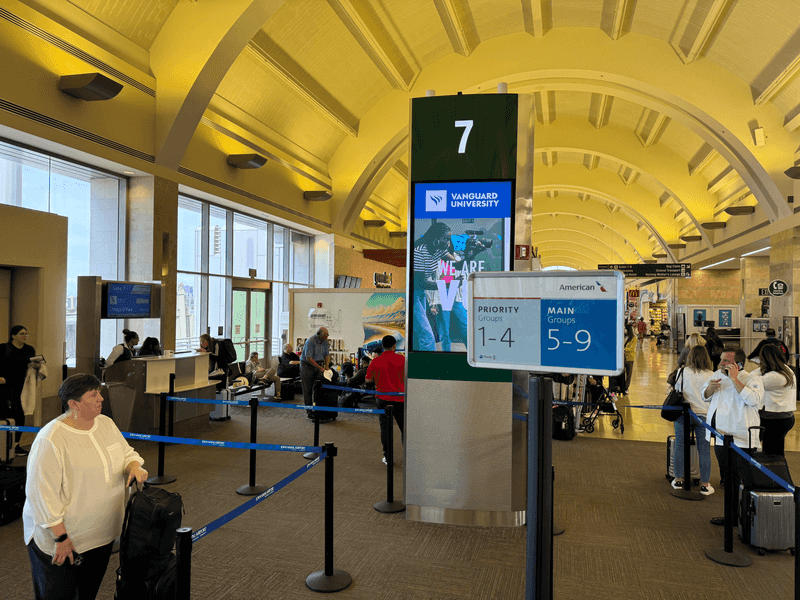
Respecting boarding groups creates a smoother process for everyone. I wait patiently for my group number or zone to be called rather than crowding the gate prematurely.
Airlines design boarding sequences to load the plane efficiently. When passengers board out of order, it creates bottlenecks in the aisles and slows down the entire process.
If you’re anxious about overhead bin space, consider purchasing priority boarding instead of trying to sneak into an earlier group. This legitimate approach ensures you board early without causing frustration among fellow passengers and gate agents who must enforce boarding policies.
11. Follow Seating Zones
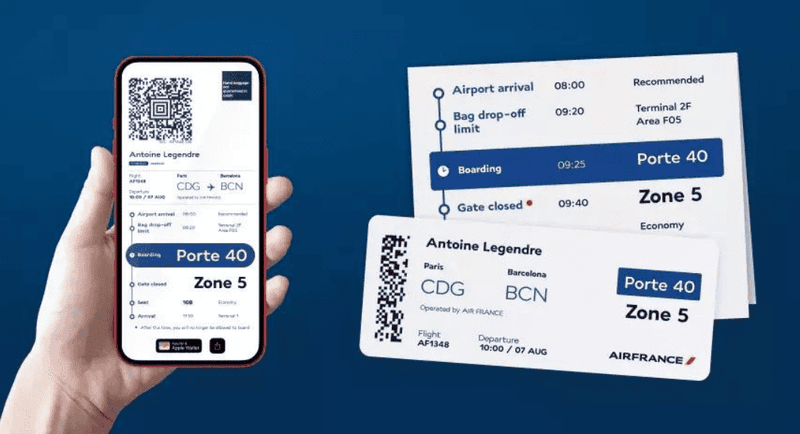
Boarding by zones isn’t just an airline preference – it’s designed for maximum efficiency! When passengers board from back to front, everyone moves more quickly to their seats without creating traffic jams.
Understanding your zone before lining up prevents confusion and keeps the process moving smoothly. I always check my boarding pass for my zone number as soon as I receive it.
If you’re traveling with family members assigned to different zones, you can typically board together in the higher-numbered (later) zone. However, if you have small children, most airlines allow family boarding between first class and regular zones, regardless of your seat location.
12. Have ID Ready
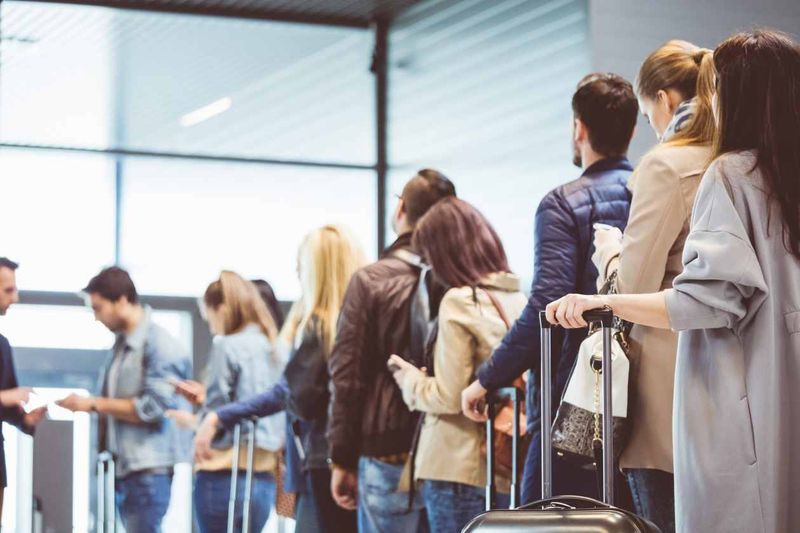
Scrambling for identification while at the podium creates unnecessary delays. I always take out my ID or passport while waiting in the boarding line, holding it alongside my boarding pass.
For international flights, some countries require seeing your passport multiple times – at check-in, security, boarding, and upon arrival. Keeping it accessible in a consistent pocket eliminates stress and saves precious time.
Consider using a lanyard or neck wallet for your ID during the airport process. This hands-free option keeps your most important documents secure yet instantly accessible, allowing you to manage your luggage without juggling important papers.
13. Use Airline App
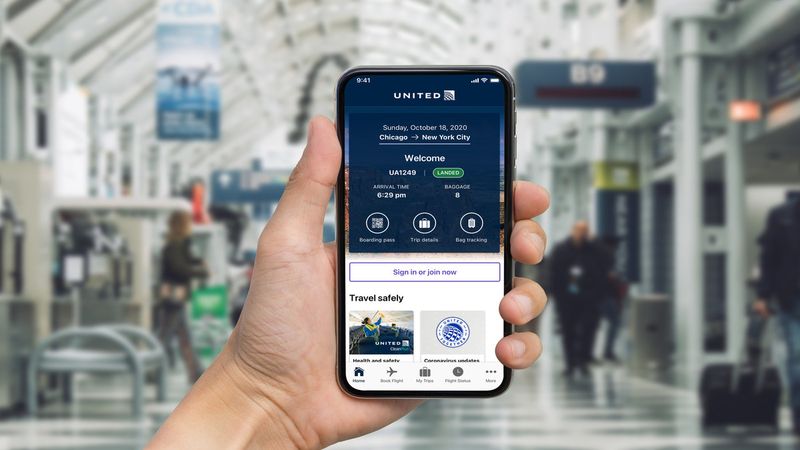
Airline apps provide real-time updates about gate changes, delays, and boarding times directly to your phone. I check mine regularly for the most current information rather than relying solely on airport displays.
These apps often show your exact seat location, aircraft type, and amenities available on your specific flight. This knowledge helps you board more confidently, knowing exactly where you’re headed.
Many airline apps now include interactive airport maps showing restaurants, restrooms, and the quickest routes between gates. This feature is especially valuable during tight connections or when navigating unfamiliar airports, saving you from wandering aimlessly or asking for directions.
14. Travel Light and Fast
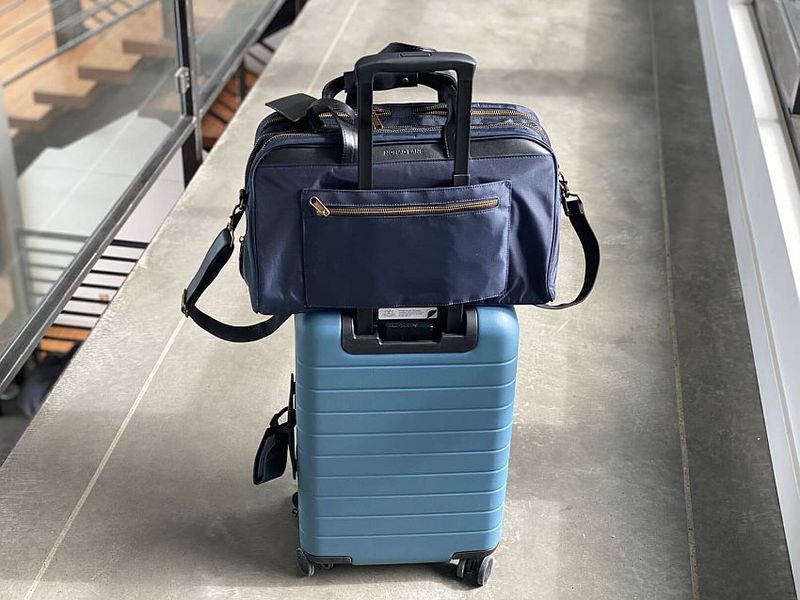
Minimalist packing transformed my travel experience completely! I limit myself to one carry-on and one personal item, eliminating checked baggage whenever possible for faster movement through the airport.
Fewer bags means greater mobility when rushing between gates or navigating crowded terminals. You’ll move more quickly during boarding without struggling to manage multiple items.
Packing versatile clothing items that can be worn multiple ways reduces what you need to bring. Dark colors hide stains, and quick-dry fabrics can be washed in hotel sinks if necessary. This approach not only speeds up your boarding process but also gives you freedom during your entire journey.
15. Stay Calm in Line
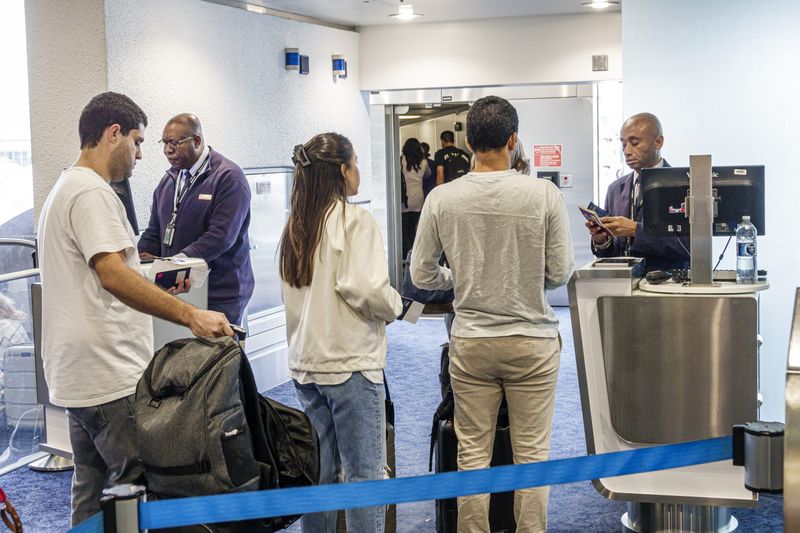
Maintaining a positive attitude makes the entire boarding process more pleasant for everyone. I use waiting time productively by double-checking my seat assignment or reviewing my travel itinerary.
Deep breathing exercises help manage anxiety if lines are moving slowly or delays are announced. Remember that getting frustrated won’t make the line move faster – it only raises your blood pressure and stresses those around you.
Consider downloading a meditation app with short exercises specifically designed for travel situations. A quick three-minute calming session while waiting can completely change your mindset and prepare you to handle any unexpected boarding challenges with grace.
16. Be Kind to Crew
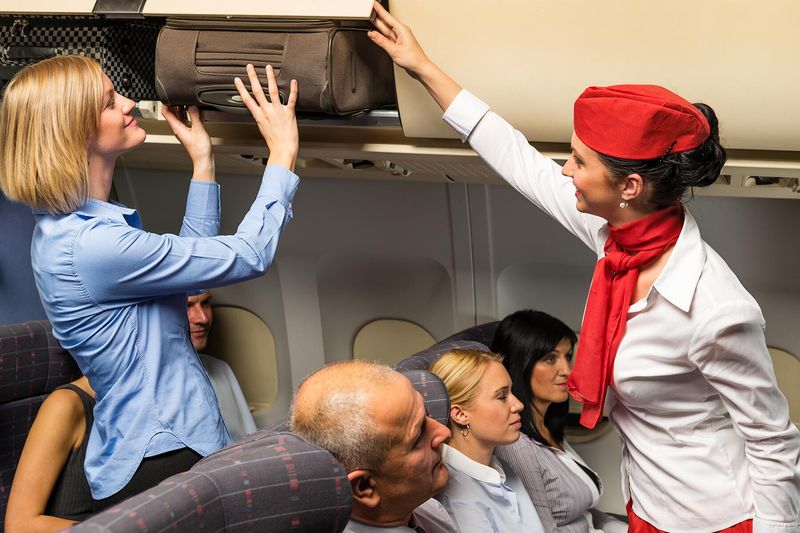
Flight attendants and gate agents handle countless passenger interactions daily. A genuine smile and simple “thank you” creates goodwill that might lead to extra assistance if you need it later.
These aviation professionals have the power to improve your journey in numerous ways, from helping find overhead space to providing extra snacks. Treating them respectfully acknowledges their expertise and hard work.
Gate agents particularly appreciate passengers who listen attentively to instructions rather than arguing about policies they don’t control. When weather delays or mechanical issues arise, remember the crew wants to get you to your destination safely – they’re not causing problems deliberately!
17. Ignoring Group Numbers (Bad Habit)
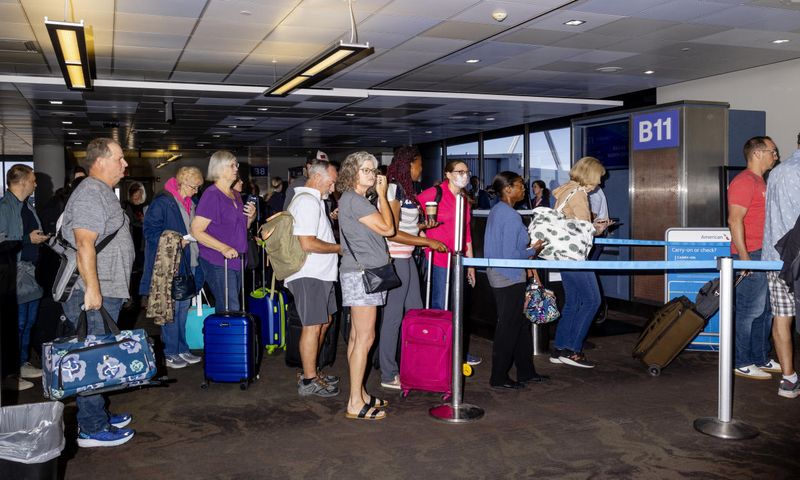
Attempting to board before your group is called might seem harmless, but it actually slows down the entire process. Airlines design boarding sequences based on aircraft layout and passenger distribution.
When passengers board out of order, it creates congestion in exactly the areas the airline is trying to load efficiently. This behavior often results in gate agents needing to make additional announcements and check boarding passes more carefully, slowing things down for everyone.
If overhead bin space is your concern, consider upgrading to priority boarding legitimately. Otherwise, respect the system – you’ll likely find that when everyone follows the established order, boarding proceeds more quickly and smoothly for all passengers.
18. Check Gate Regularly
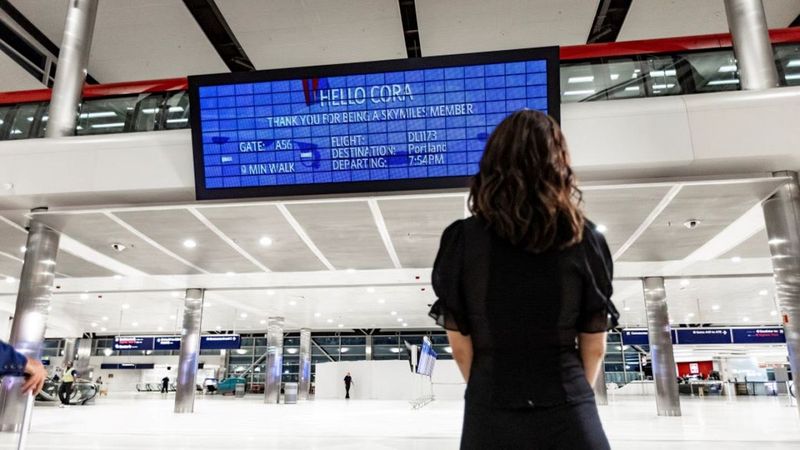
Gate changes happen frequently and sometimes with little notice! I make a habit of confirming my departure gate on the airport monitors every 30 minutes, even if I’ve already checked earlier.
Last-minute switches can occur due to operational needs, weather conditions, or aircraft changes. Staying informed prevents the panicked rush of realizing your flight is boarding from a completely different terminal than expected.
Many airports now offer free WiFi, allowing you to receive electronic updates about gate changes through your airline’s app. Connecting to this service immediately upon arrival gives you an additional layer of protection against missing important announcements.
19. Overstuffing Overhead Bin (Bad Habit)
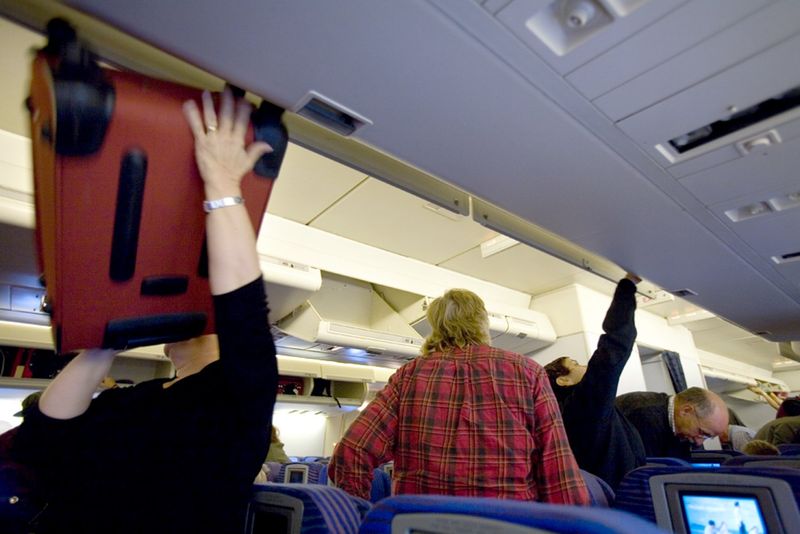
Cramming oversized bags into overhead compartments creates problems for everyone. When one person takes excessive space, others are forced to place their regulation-sized bags far from their seats or gate-check them unnecessarily.
Flight attendants notice passengers who struggle with obviously oversized luggage. This behavior often leads to delays while crew members rearrange bins or remove items that don’t fit properly.
The considerate approach is using the space directly above your own seat and placing smaller items under the seat in front of you. Position wheeled luggage with wheels facing outward to maximize available space. These simple courtesies ensure everyone finds room for their essential carry-ons.
20. Lining Up Too Early (Bad Habit)
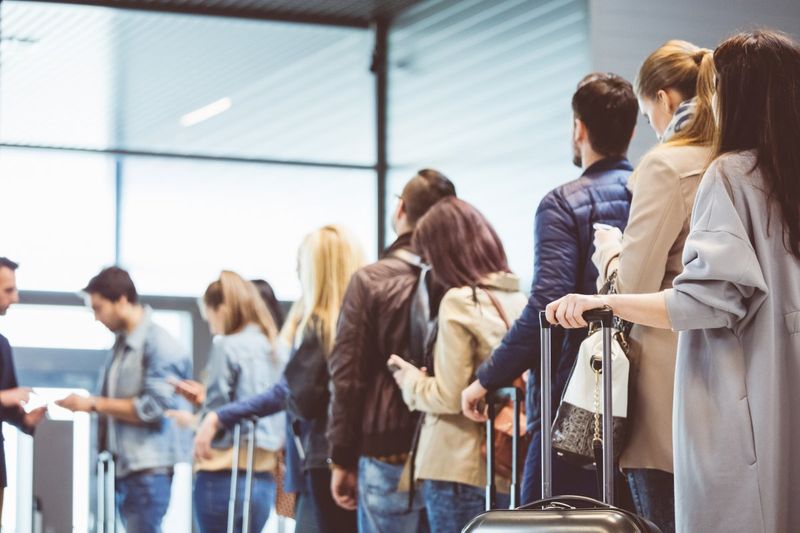
Hovering near the gate long before your boarding group creates unnecessary congestion. This anxious behavior blocks pathways for passengers whose groups have actually been called.
Gate agents notice these premature line-formers and often become stricter about enforcing boarding order when they see passengers trying to board ahead of their assigned groups. This creates tension that affects everyone’s experience.
Instead of standing anxiously by the gate, find a comfortable seat nearby where you can still hear announcements. Use this time to ensure your boarding pass is ready and your essential items are accessible. This approach keeps the boarding area clear while still allowing you to board promptly when your group is called.
21. Blocking the Aisle (Bad Habit)
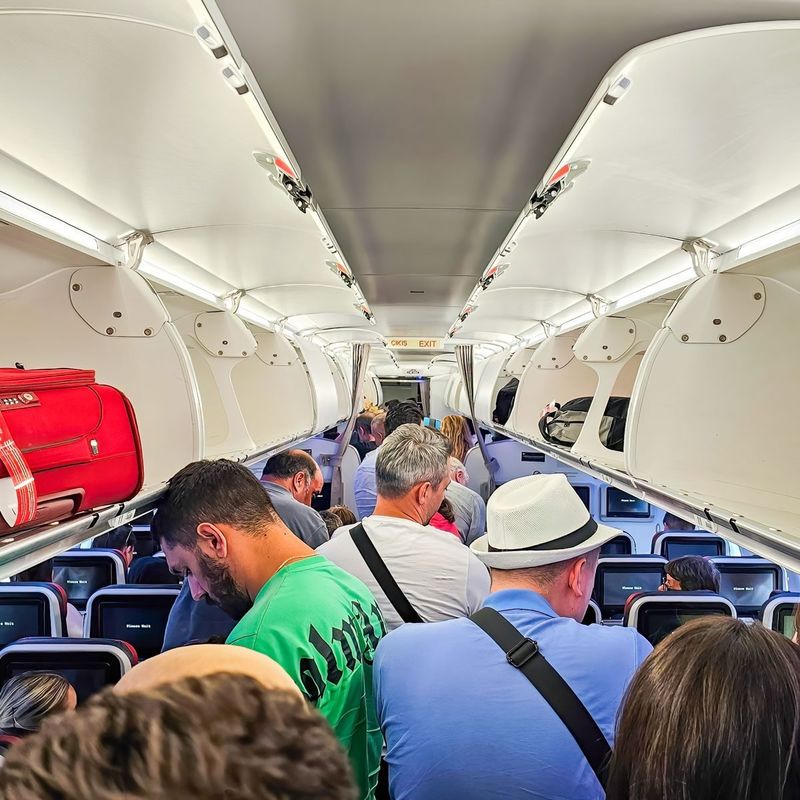
Stopping in the middle of the airplane aisle to organize belongings creates a human traffic jam! This common mistake forces everyone behind you to wait while you arrange your items or remove things from your bag.
The smoothest boarders prepare before entering the aircraft. Have your entertainment, water bottle, and reading materials easily accessible so you can quickly slide into your seat without unpacking mid-aisle.
If you need to access overhead bins, step into your row first, allowing others to pass. Once the aisle is clear, you can step back out to load your luggage. This simple courtesy keeps the boarding process moving efficiently for everyone and reduces the total boarding time for the flight.
22. Rushing the Jet Bridge (Bad Habit)
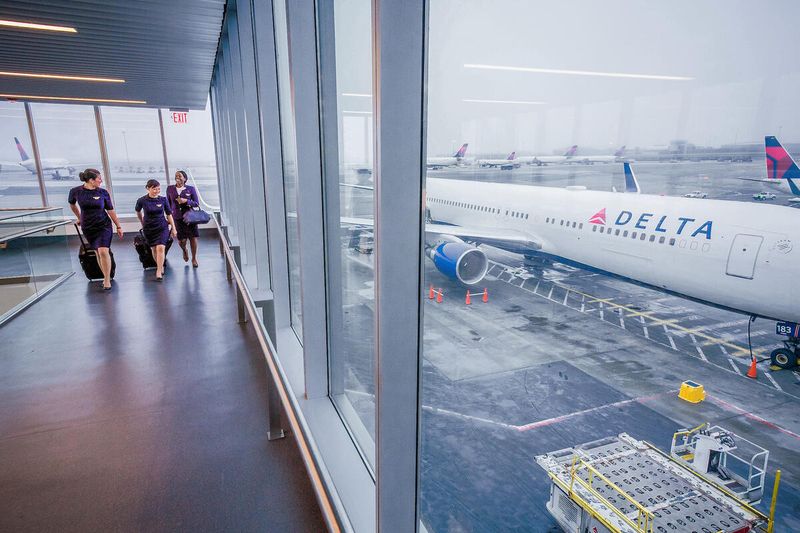
Pushing aggressively toward the jet bridge creates unnecessary stress and potential safety hazards. The aircraft won’t depart until all ticketed passengers are aboard, so racing to be first accomplishes nothing positive.
Elderly passengers, families with children, and those with mobility issues particularly appreciate a calmer boarding environment. Your patience allows these travelers to board safely without feeling pressured or anxious.
Most airlines board by zones specifically to prevent crowding on the jet bridge. Respecting this system creates a more orderly process for everyone. Remember that all passengers will reach the same destination at exactly the same time, regardless of who boards first!
